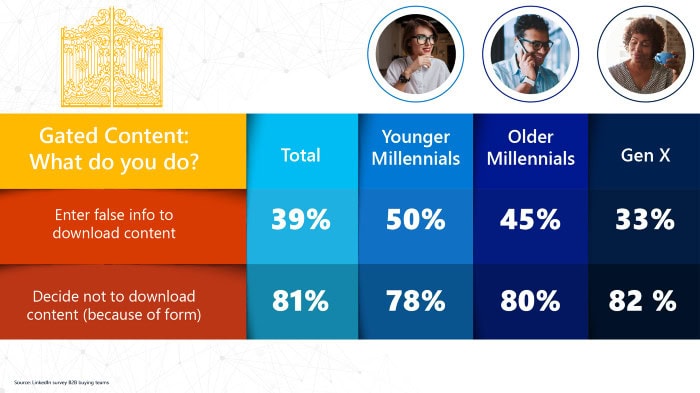The importance of creativity in marketing is widely acknowledged. Nonetheless, there’s a gulf between the known value and B2B brands actually executing creative campaigns.
One of the key obstacles to trying more creative campaigns? Gaining C-suite support.
What is Creativity in B2B Marketing?
Creativity in B2B marketing means finding unique and effective ways to connect with potential customers. That could mean using new or different platforms and methods to reach target audiences, breaking the mold of so-called “best practices,” leveraging ideas from other industries, infusing humor or anything else that is unexpected.
Proving Creativity’s Value + Need for Change
The C-suite’s perception of PR –often the department driving creative campaigns– has evolved significantly in the last year, with a stronger emphasis on its impact on business outcomes beyond visibility and crisis management. In fact, 92% of PR and communications professionals noted that their C-suite sought their counsel more frequently than in previous years.

of communications leaders who participated in the Global Comms Report agree that the C-Suite has sought comms’ counsel more in the past 12 months than in previous years. (Cision)
While CEOs have an increased understanding that PR is crucial for reaching stakeholders, gaining approval on new approaches and creative activations isn’t a given.
Marketers must make it undisputable that creativity is imperative for reaching next-gen B2B buyers. They must prove the value of creative ideas by linking them to business outcomes and illustrate that a failure to adapt could be detrimental.
Stand Out
You’ve heard it before… Multiple reports show that it takes B2B buyers up to six months to select a vendor, they are 70% through the buyer journey before they engage a sales rep and only 5% of buyers are actively in the market at any given time.
Businesses must work hard to stay top of mind. Why? Because 90% of sales go to brands buyers were already aware of before doing any research.
The best way to be memorable? Being creative and doing the unexpected.
Research from LinkedIn’s B2B Institute found that creative outliers in B2B marketing earn more profit, see greater return on investment and enjoy a bigger market share.
Creativity plays a crucial role in differentiating a brand in a crowded B2B market. It builds brand reputation, establishes emotional engagement and enables brands to adapt to market changes.
New Strategies
B2B sales and marketing playbooks are shifting. There’s a deep misalignment between how suppliers sell and how buyers buy.
Cold emailing is increasingly seen as ineffective and may even harm a brand’s reputation. Whitepaper downloads and gated content have lost their luster. An overreliance on Google Search is dangerous as more AI options and social tendencies emerge.
Strategies focused on quick, transactional sales will continue to decline in effectiveness with next-gen audiences. With these traditional tactics falling flat, leveraging existing channels in new ways can help brands reach modern B2B buyers.
For example, Millennials make up the largest group of purchasers (with Gen Z not far behind) and are more likely than their older peers to use social media in their buyer’s journey. They actively discover and engage with new vendors on social platforms or via influencers.
B2B brands must stay abreast of changing buyer behavior and adjust their marketing strategies accordingly, or risk being ignored.
Right-Fit Creativity
You’ve done an analysis and made it clear to the C-suite that your previous tactics are dropping in effectiveness. You’ve also pulled the data to prove that next-gen buyers are doing things differently and are more responsive to tactics that involve creativity.
What’s next?
Once you’ve made a compelling case to the C-suite for embracing creativity in B2B marketing, the next steps involve strategic implementation.
Our biggest piece of advice:
Campaigns must be rooted in audience insights, feasibility and business goals. Creativity for the sake of creativity will never be enough.
Your C-suite will want to understand these connections before signing off and see your plans for ongoing activation, measurement and evaluation.
Develop a Comprehensive Creative Strategy
- Identify Key Objectives: Clearly define what you aim to achieve with your creative campaigns. Objectives might include increasing brand awareness, brand sentiment, website traffic, generating leads or reaching new audiences. Be specific and ensure you have systems in place to measure against each.
- Understand Your Audience: Dive deep into understanding the preferences, behaviors, and pain points of your target audience. Tailor your creative efforts to resonate with their specific needs and interests.
- Select the Right Channels: Determine which channels are most effective for reaching your target market. These might include influencer collaborations, trade show activations, custom research, or thought leadership. Only your audience research can reveal what will resonate most.
- Foster Cross-Department Collaboration: Encourage collaboration between marketing, sales, PR, customer success, product development and other relevant departments to ensure a unified approach. Cross-functional teams can provide diverse perspectives and ideas that enhance creativity.
Execute With Agility
- Pilot Programs: Start with pilot programs to test creative ideas on a smaller scale. This allows you to gather initial data and insights without committing significant resources upfront.
- Iterate and Optimize: Use the data from pilot programs to refine and optimize your strategies. Be prepared to pivot quickly based on what works and what doesn’t.
- Be Ready: Ensure your sales department and sister marketing teams are prepared to amplify your creative efforts. That might include ready-to-launch email nurtures for new leads, supportive content programs, etc. Capitalize on the momentum built.
Measure and Prove ROI
- Regular Reporting: Return to your key objectives and metrics. Share regular reports with the C-suite to track performance. Highlight successes and areas for improvement to maintain transparency and build trust.
- Adjust Strategies Based on Data: Use the insights gained from your metrics to continuously adjust and improve your strategies. Data-driven decision-making ensures that your creative efforts remain effective and relevant.
- Set Expectations: As mentioned before, quick-turn tactics aren’t delivering on sales like they used to. Make it clear what the expected outcomes of your creative campaigns will be. Most likely, that includes long-term brand building or new audience capture that requires further nurture. Don’t fall victim to the “Solo Stove” conundrum of misaligned expectations or short-sightedness.
Ready. Set. Go.
Gaining C-suite support is often a significant hurdle in executing creative B2B marketing campaigns. Despite the recognized importance of creativity in marketing, B2B brands are often reluctant to explore bold, new approaches.
Marketers must demonstrate the value of creativity by linking innovative ideas to tangible business outcomes. Highlighting the shift in B2B buyer behavior and the ineffectiveness of traditional tactics can help convince the C-suite.
To succeed, marketers should develop audience-focused strategies, maintain transparent, data-driven communication with leadership and be ready to act on newly generated buzz.


